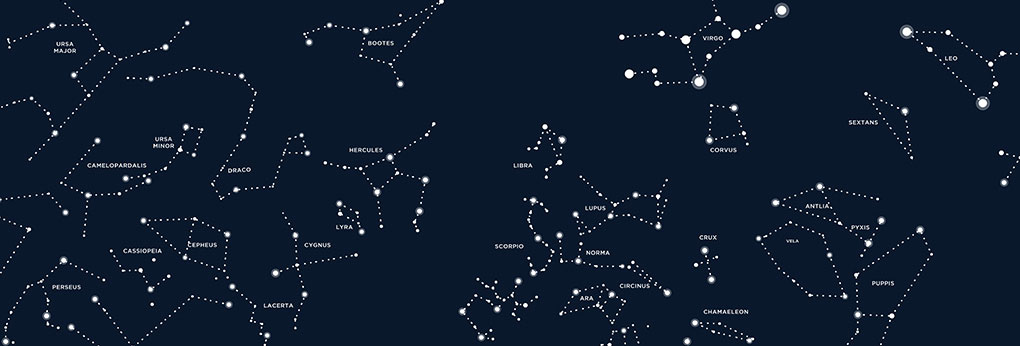

Explore the tools
We invite you to explore these tools to help you learn more about the Universe that all of us inhabit. It is a place of discovery and wonder, where reality can be more fascinating that anything the imagination can create. Make the most of your Universe. Click any of the icons on the right to explore the resources:
A 10-minute guide to the Universe
We explore our Universe through light. Within the last century we have built telescopes and instruments that can see the Universe like never before — far exceeding what the human eye can do alone. Today, we learn about the many different kinds of objects and phenomena in the Universe through radio waves, microwaves, infrared, visible light, ultraviolet, X-rays, gamma rays, and even gravitational waves.
Learn more about light.
The basics
Solar System and Beyond
The Earth's local neighborhood is our Solar System, with the Sun at its center and the planets, asteroids, and comets in orbit around it. Scientists are providing new insights and also uncovering new mysteries about objects of all sizes throughout our solar system, from planets to their moons, asteroids and comets. Additionally, exoplanets are planets that orbit around stars other than our Sun. Discovered almost 20 years ago using visible light telescopes, thousands of exoplanets and exoplanet candidates have since been discovered and catalogued. Learn more.
Stars
A star is born when a cloud of gas and dust collapses to the point where the material in the center of the clump is so dense that nuclear fusion can occur. The Sun is the nearest star to Earth. Astronomers use telescopes including Chandra to study the millions and billions of stars that exist in our Milky Way galaxy and beyond. Learn more.
Stellar Evolution: Black holes and Supernova Remnants
Stars shine as a result of nuclear reactions deep in their interior. As a star's nuclear energy supplies are used up, it evolves toward an end state that depends on its mass. For example, supernovas: supernovas are some of the most dramatic events in the cosmos, signaling the collapse and destruction of a star much larger than our Sun. These titanic explosions send shock waves rumbling through space and create giant tapestries of glowing gas that have been superheated to millions of degrees. A black hole, meanwhile, is a dense, compact object whose gravitational pull is so strong that — within a certain distance of it — nothing can escape, not even light. Black holes range in size from a few times the mass of the Sun to millions or even billions of times the Sun's mass. Learn more.
Galaxies
A galaxy is a gravitationally-bound system of stars, gas, dust and dark matter. There are billions of galaxies throughout the Universe and they come in different shapes and sizes. Within these galaxies are black holes, neutron stars, and bubbles of hot gas that reveal themselves in X-rays. Astronomers study galactic behavior and phenomena, from our own Milky Way galaxy to the many billions of galaxies beyond us. Learn more.
Clusters of Galaxies
Galaxy clusters are the largest structures in the Universe held together by gravity. These colossal structures contain three main components: hundreds or even thousands of individual galaxies, large amounts of dark matter, and enormous reservoirs of hot gas. Chandra has allowed astronomers to better understand these cosmic giants. Learn more.
Watch a Video:
Take a deeper dive into Chandra science with our video podcasts, organized by topic:
https://chandra.si.edu/resources/podcasts/
Introduction to the Constellations

"Constellation" is the name we give to seeming patterns of stars in the night sky. "Stella" is the Latin word for star and a constellation is a grouping of stars. In general, the stars in these groups are not actually close to each other in space, they just appear to be close when viewed from Earth.
In 1929 the International Astronomical Union defined 88 constellations that are today recognized as the "official" constellations. Many of these constellations are derived from the complex creations of Greek mythology, like Andromeda, Perseus, and Orion. Others came from ancient cultures such as the Egyptians and Chaldeans and still others were not defined until the 17th and 18th century.
To learn more about each constellation, click on each name.
Andromeda
Aquarius
Aquila
Ara
Boötes
Cancer
Canes Venatici
Canis Major
Capricornus
Carina
Cassiopeia
Centaurus
Cepheus
Orion
Pegasus
Perseus
Pisces
Piscis Austrinus
Sagittarius
Sculptor
Taurus
Tucana
Ursa Major
Vela
Virgo
-After learning about these constellations, light up the stars with our paper circuits project or create stories about your own constellations.




